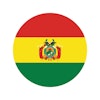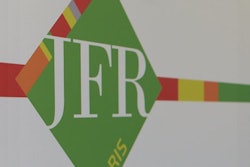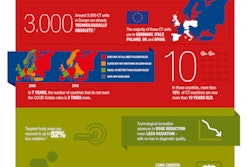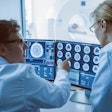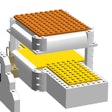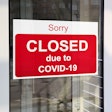Obsolescent imaging technology is undermining patient safety in the U.K., according to a report by the Association of Healthcare Technology Providers for Imaging, Radiotherapy, & Care (AXREM).
A survey of AXREM member organizations found that 55% of CT scanners in the U.K. are more than five years old and 12% -- over 100 systems -- are more than 10 years old. The installed base of MRI scanners is also of concern; a 2016 AXREM survey suggested 54% of systems in the U.K. are over five years old and 20% are over 10 years old, according to the association. What's more, a Clinical Imaging Board report in April found that some 56% of systems in the National Health Service (NHS) were over five years old and 29% were over 10 years old.
"Lack of investment has resulted in both an aged installed base and a lower density of scanners per million population compared with other European countries," AXREM wrote. "The continued use of older equipment potentially exposes patients to unnecessary risk."
The age profile of the CT scanners suggests many patients are being scanned on equipment that doesn't include the latest dose-saving measures, AXREM said. The organization calls upon healthcare providers to focus on dose reduction and optimization when replacing aging equipment in order to enhance patient safety.
AXREM also pointed out that equipment obsolescence can extend to operating system software within the imaging equipment. The WannaCry ransomware attack in May 2017 highlighted these security issues; older imaging equipment may not be capable of being updated to increase protection against such cyberattacks, according to the association.
Adapting funding mechanisms will be fundamentally important for implementing innovations in imaging technology, according to AXREM.
"All too often short-term financing constraints and silo budgeting can compromise early adoption of new technologies," the authors wrote. "Many purchasing decisions are dominated by capital price criteria, and can fail to consider the wider 'incremental value' that new technologies provide."
Noting the capital funding barriers that often prevail within the NHS, they added that equipment suppliers and third parties offer a range of new business models such as leasing, managed equipment services, and a variety of rental and usage-based tariff programs. These can shift funding from capital expenditure to operational expenditure, while also including an element of risk sharing.
"This arguably provides the variety of financial platforms to allow innovative solutions to reach more patients," AXREM wrote. "Given appropriate contracting and investment, more hospitals and patients in the U.K. will benefit from greater efficiencies and improved outcomes afforded by ongoing advances in medical technology."


